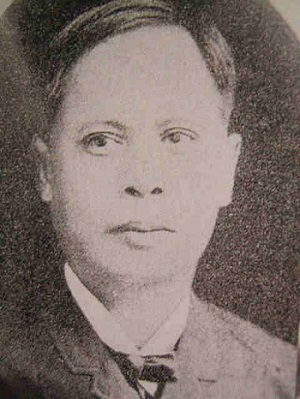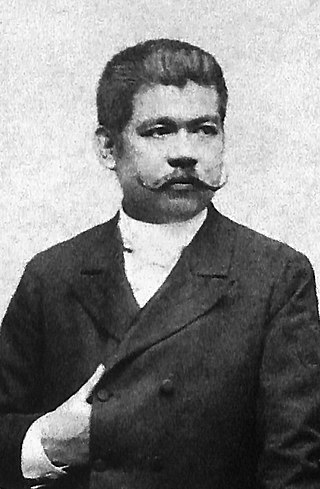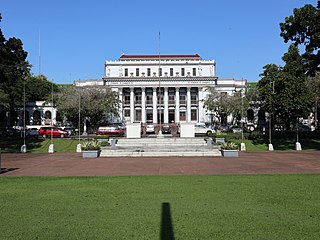
Rizal, officially the Province of Rizal, is a province in the Philippines located in the Calabarzon region in Luzon. Its capital is the city of Antipolo. It is about 16 kilometers (9.9 mi) east of Manila. The province is named after José Rizal, one of the main national heroes of the Philippines. It is bordered by Metro Manila to the west, Bulacan to the north, Quezon to the east and Laguna to the southeast. The province also lies on the northern shores of Laguna de Bay, the largest lake in the country. Rizal is a mountainous province perched on the western slopes of the southern portion of the Sierra Madre mountain range.

Bulacan, officially the Province of Bulacan, is a province in the Philippines located in the Central Luzon region. Its capital is the city of Malolos. Bulacan was established on August 15, 1578, and part of the Metro Luzon Urban Beltway Super Region. This province is a part of the Greater Manila Area.

Quezon City, also known as the City of Quezon and Q.C., is the most populous city in the Philippines. It is also the richest city in the Philippines. According to the 2020 census, it has a population of 2,960,048 people. It was founded on October 12, 1939, and was named after Manuel L. Quezon, the second president of the Philippines.

Malolos, officially the City of Malolos, is a component city and capital of the province of Bulacan, Philippines. According to the 2020 census, it has a population of 261,189 people. It is the capital city of the province of Bulacan as the seat of the provincial government.

Deodato Arellano y de la Cruz was a Filipino propagandist and the first president of the Katipunan, which was founded at his home in Azcarraga Street, Manila. He was first to be given the title Supremo by the Katipunan. After studying bookkeeping in Ateneo de Municipal de Manila, he became an assistant clerk for the Spanish military. He was a member of the Freemasonry in the Philippines and became involved in the Propaganda Movement.

Juan Marcos Arellano y de Guzmán, or Juan M. Arellano, was a Filipino architect, best known for Manila's Metropolitan Theater (1935), Legislative Building, the Manila Central Post Office Building (1926), the Rizal Memorial Sports Complex (1934), the Central Student Church, the old Jaro Municipal Hall (1934) and the Old Iloilo City Hall (1935) in Iloilo, the Negros Occidental Provincial Capitol (1936), the Cebu Provincial Capitol (1937), Dumaguete Presidencia (1937), the Bank of the Philippine Islands Cebu Main Branch (1940), Misamis Occidental Provincial Capitol Building (1935), Cotabato Municipal Hall (1940) and the Jones Bridge during the pre-war era.

The Rizal Memorial Coliseum is an indoor arena in the Rizal Memorial Sports Complex in Manila, Philippines. It can hold up to 6,100 people.

The Manila North Cemetery is one of the oldest cemeteries in Metro Manila, Philippines. The cemetery is owned by and located in the City of Manila, the national capital, and is one of the largest in the metropolis at 54 hectares. It is located alongside Andrés Bonifacio Avenue and borders two other important cemeteries: the La Loma Cemetery and the Manila Chinese Cemetery. Numerous impoverished families notably inhabit some of the mausoleums.

The Manila Metropolitan Theater, also known as the Metropolitan Theater, abbreviated as the MET, is a historic Philippine Art Deco building located in Plaza Lawton in Ermita, Manila. It is recognized as the forefront of the Art Deco architectural style in the Philippines.

Juan Felipe de Jesús Nakpil, KGCR, KSS known as Juan Nakpil, was a Filipino architect, teacher and a community leader. In 1973, he was named one of the National Artists for architecture. He was regarded as the Dean of Filipino Architects.

The Manila City Hall is the official seat of government of the City of Manila, located in the historic center of Ermita, Manila. It is where the Mayor of Manila holds office and the chambers of the Manila City Council is located. It was originally intended to be a part of a national government center envisioned by Daniel Burnham in the 1900s. Although the dream plan was not fully implemented, some buildings for the proposed government center were constructed, including the Old Legislative Building, and the Agriculture and Finance Buildings.

The Cebu Provincial Capitol is the seat of the provincial government of Cebu in the Philippines. Located at the north end of Osmeña Boulevard in Cebu City, it was designed by Juan M. Arellano, a Filipino architect best known for the Manila Metropolitan Theater (1935), the Legislative Building, and the Manila Central Post Office (1926). An inscription on the central concave portion of its façade reads, "The authority of the government emanates from the people. Erected A.D. MCMXXXVII."

Marcelo Hilario del Pilar y Gatmaitán, commonly known as Marcelo H. del Pilar and also known by his nom de plumePláridel, was a Filipino writer, lawyer, journalist, and freemason. Del Pilar, along with José Rizal and Graciano López Jaena, became known as the leaders of the Reform Movement in Spain.

The Negros Occidental Provincial Capitol is the seat of the provincial government of Negros Occidental located at Gatuslao St., Bacolod, Philippines. Within its complex is the Capitol Park and Lagoon.

Arcadio Arellano was a notable architect who was considered a pioneer during his time. He built famous edifices and the residential buildings of the elite. In all his works, he departed from American and European designs and instead incorporated Filipino native plants and motifs.

Rizal Memorial Library and Museum is a three-story, pre-war, neoclassical heritage site and landmark in Cebu City, Philippines. Dedicated to the national hero, Jose P. Rizal, it was designed by Filipino architect Juan M. Arellano, who also designed the Cebu Provincial Capitol building. Inaugurated in 1939, the building survived World War II. It is located along Osmeña Boulevard and houses the offices of Cebu City Tourism, the Cultural and Historical Affairs Commission, the Sinulog Hall on the third floor, the Cebu City Museum of Visual Arts on the second floor, and the Cebu City Public Library on the ground floor.
Pedro Siochi (1886–1951) was a Filipino architect and civil engineer of famous landmarks in the Philippines.



















